
In musical instrument classification, string instruments or chordophones, are musical instruments that produce sound from vibrating strings when a performer plays or sounds the strings in some manner.

Bartolomeo Cristofori di Francesco was an Italian maker of musical instruments famous for inventing the piano.
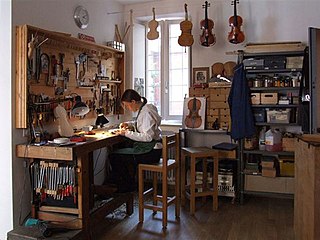
A luthier is a craftsperson who builds or repairs string instruments.

The viola organista is a musical instrument designed by Leonardo da Vinci. It uses a friction belt to vibrate individual strings, with the strings selected by pressing keys on a keyboard. Leonardo's design has intrigued instrument makers for more than 400 years, but though similar instruments have been built, no extant instrument constructed directly from Leonardo's incomplete designs is known. Sometimes it is mistakenly referred to as the harpsichord viola, which is a different instrument.

Gasparo da Salò is the name given to Gasparo Bertolotti, one of the earliest violin makers and an expert double bass player. Around 80 of his instruments are known to have survived to the present day: violins, alto and tenor violas, viols, violones and double basses, violas designed with only a pair of corners, and ceteras.

The mandora or gallichon is a type of 18th- and early 19th-century lute, with six to nine courses of strings. The terms were interchangeable, with mandora more commonly used from the mid-18th century onwards.
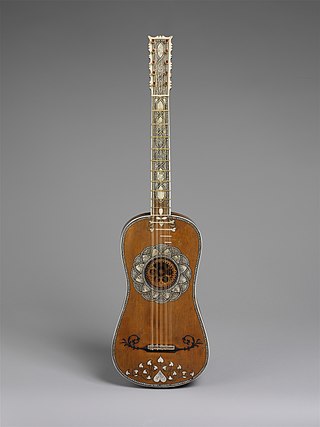
The Baroque guitar is a string instrument with five courses of gut strings and moveable gut frets. The first course sometimes used only a single string.
Traditional Vietnamese musical instruments are the musical instruments used in the traditional and classical musics of Vietnam. They comprise a wide range of string, wind, and percussion instruments, used by both the Viet majority as well as the nation's ethnic minorities.
The oval spinet is a type of harpsichord invented in the late 17th century by Bartolomeo Cristofori, the Italian instrument maker who later achieved fame for inventing the piano. The oval spinet was unusual for its shape, the arrangement of its strings, and for its mechanism for changing registration.

The Byzantine lyra or lira was a medieval bowed string musical instrument in the Byzantine Empire. In its popular form, the lyra was a pear-shaped instrument with three to five strings, held upright and played by stopping the strings from the side with the fingertips and fingernails. The oldest known depiction of the instrument is on a Byzantine ivory casket, dated to circa 900–1100 AD, preserved in the Bargello in Florence. Modern variants of the lyra are still played throughout the Balkans and in areas surrounding the Black Sea, including Greece, Crete, Karpathos, Albania, Montenegro, Serbia, Bulgaria, North Macedonia, Croatia, Italy, Turkey and Armenia.
Zanetto Micheli was the first representative of the oldest known family of string instrument makers from the famous Renaissance Brescian school of strings and violin making, from which many very clear archive documents but some perhaps 20 original instruments seems to survive. Micheli was born in the Italian village of Montichiari and later moved to the nearby town of Brescia. The birth date is deduced from a document of 1550 in which Zanetto declared to be over 60 years old. The oldest record of Micheli is in the 1527 Custodie notturne with the designation "Ioannettus de li violettis", but without the being described as a "sonator" (player) of that instrument as is in other instances of the documents. Other documents testify to his long and successful career as a "magister" (master) of string instruments. In 1533, he was quoted by Giovanni Maria Lanfranco in his musical and organological treatise Scintille di Musica edited in Brescia in 1533. In 1537 a notarial act is written that Zanetto has to make a consort 5 viols with alla the accessories like the bows and a good varnishing. In almost all of the many documents on his activity, the string instruments are predominant, and the customers of the maker are the most distinguished nobles of Brescia. And more, in the archive documents Zanetto is called "master of violins" like all the other Brescian makers starting surely from 1558. But we have to remember that the word violin appear in Brescia in 1530 and 20 years later il all part of Italy and Europe. Some very rare and good instruments created by Micheli survive in museums and private collections around the world. Some were exhibited at the Maggini exposition in Brescia 2007.

The Conservatorio Luigi Cherubini is located in piazza delle Belle Arti in Florence. The conservatory, among the most important in Italy, is named after the Florentine composer Luigi Cherubini (1760–1842).

The Museum of contemporary art of Alcamo is located in Piazza Ciullo in Alcamo, inside the Ex Collegio dei Gesuiti, near the majestic Church of Jesus. The exhibition centre, large about 400 square metres, is on the first floor; at the entrance there are an information desk, a meeting room and a bookshop.

Monsignor Vincenzo Regina was an Italian presbyter and historian.
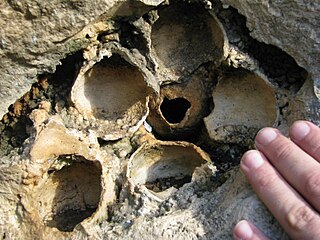
The Geosite Travertino della Cava Cappuccini is located in Alcamo, in the province of Trapani, in Sicily.
Salvi Harps is an Italian manufacturer of concert harps. The company was founded by Italian-American harpist and harpmaker Victor Salvi in 1956.
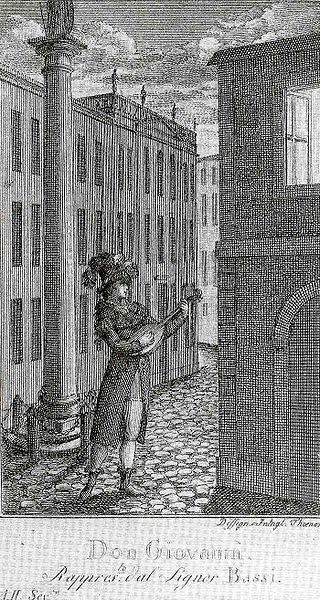
The mandolin is a modern member of the lute family, dating back to Italy in the 18th century. The instrument was played across Europe but then disappeared after the Napoleonic Wars. Credit for creating the modern bowlback version of the instrument goes to the Vinaccia family of Naples. The deep bowled mandolin, especially the Neapolitan form, became common in the 19th century, following the appearance of an international hit, the Spanish Students. They toured Europe and America, and their performances created a stir that helped the mandolin to become widely popular.

Giacomo Bisiach was an Italian luthier.
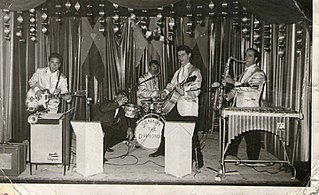
Fausto Cannone was an Italian singer-songwriter, teacher and poet.






















